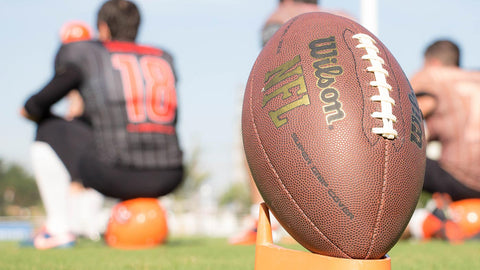Painkiller Abuse in the NFL: A Hefty Price for Entertainment
America loves its football-watching an NFL game on a crisp fall Sunday with our friends and families is a big part of our culture. But that fun comes at a cost to the pros who get tackled over and over in pursuit of a touchdown. A study of retired NFL players found that prescription painkiller abuse among NFL players is rampant, and that abuse continues even into a player’s retirement. The study found that retired NFL players are 4 times as likely to abuse painkillers as other people.
Many players said they abused painkillers so they could play through pain from injuries they might get in a game as well as pain from past injuries that hadn’t gone away. Many also said that they didn’t know about the risks of such abuse or feel like they had a choice. They felt pressure to play on, despite the pain.
The Problem With Painkiller Abuse
Painkillers like Vicodin and OxyContin are opioid drugs, like heroin, and misuse of them can lead to addiction. Yes, Vicodin and heroin are in the same class of drugs!
When prescribed by a doctor, opioids can be used in a responsible way to reduce pain, treat diarrhea, or control coughing. Inside our bodies, opioids link to receptors in the brain, spinal cord, and gut, much like pieces in a puzzle. When they do, they can block the experience of pain. For example, morphine is sometimes given to people before or after surgery. However, opioids can also affect parts of the brain that control feelings of pleasure, producing a sense of euphoria that makes people want to take them again and again even when they’re not in pain. When people keep taking them like that, opioids can actually change the way the brain works, causing strong cravings that are of part of having an addiction.
Do We Expect Too Much of Pro Athletes?
The study found that many NFL athletes also used ketorolac, a medication that reduces swelling, to also help dim pain from injuries. A growing worry about ketorolac is that it thins the blood and could make players more susceptible to the effects of concussions. What’s more, players using medications just to cover pain, not for a specific injury their doctor diagnosed, may raise their risk for injury because they feel less pain while on the field.
Should we continue to push our pro athletes to the point of using these prescription drugs to continue playing? Maybe, maybe not. We don’t know the long-term implications of this type of drug abuse yet.
Sometimes it’s hard to know where to go for the facts about drugs. At NIDA, we learn from science–not from rumors or gossip. Ask the questions, look for the facts, and think hard about what you find out and what it means for you. Visit http://1.usa.gov/1d9VmUJ to learn more.

